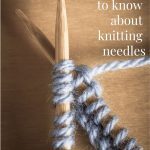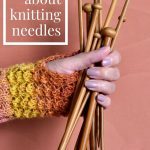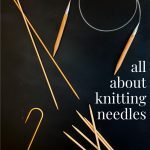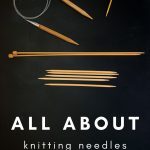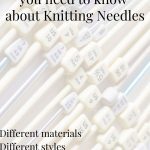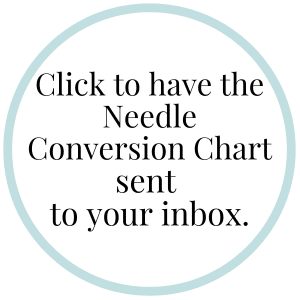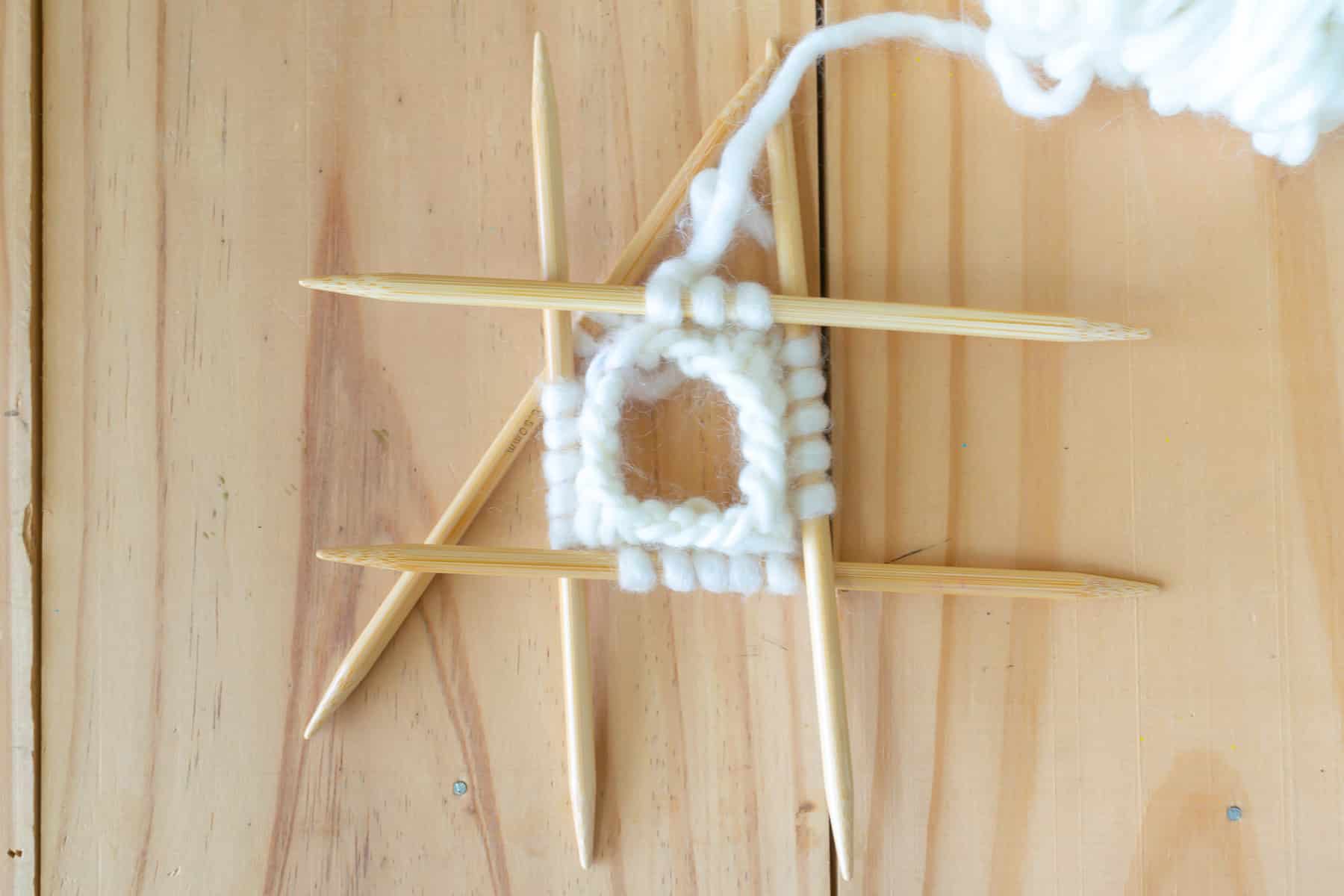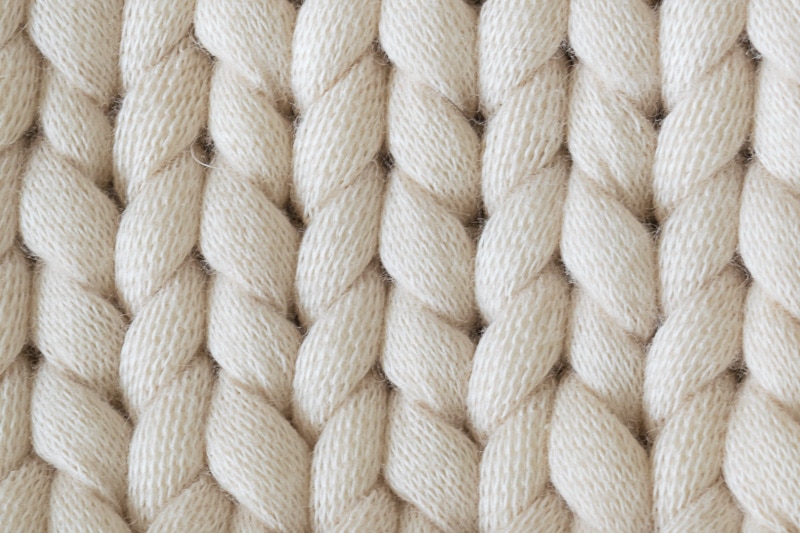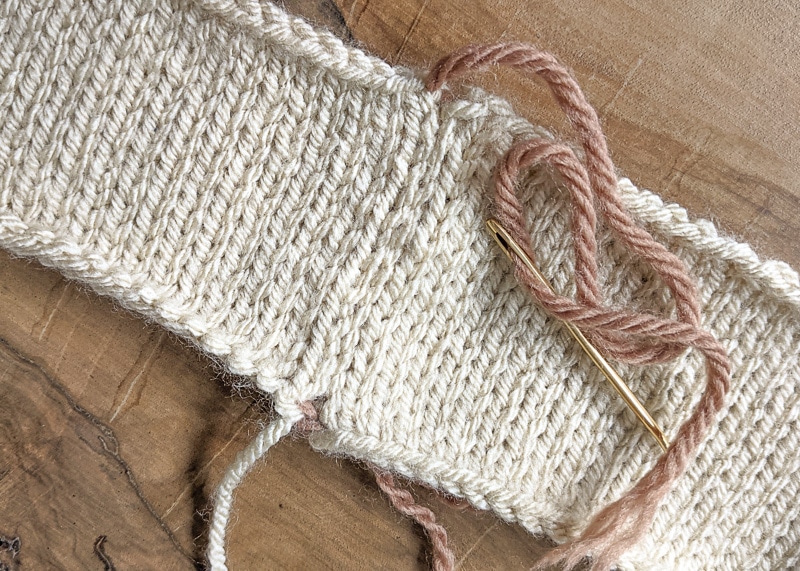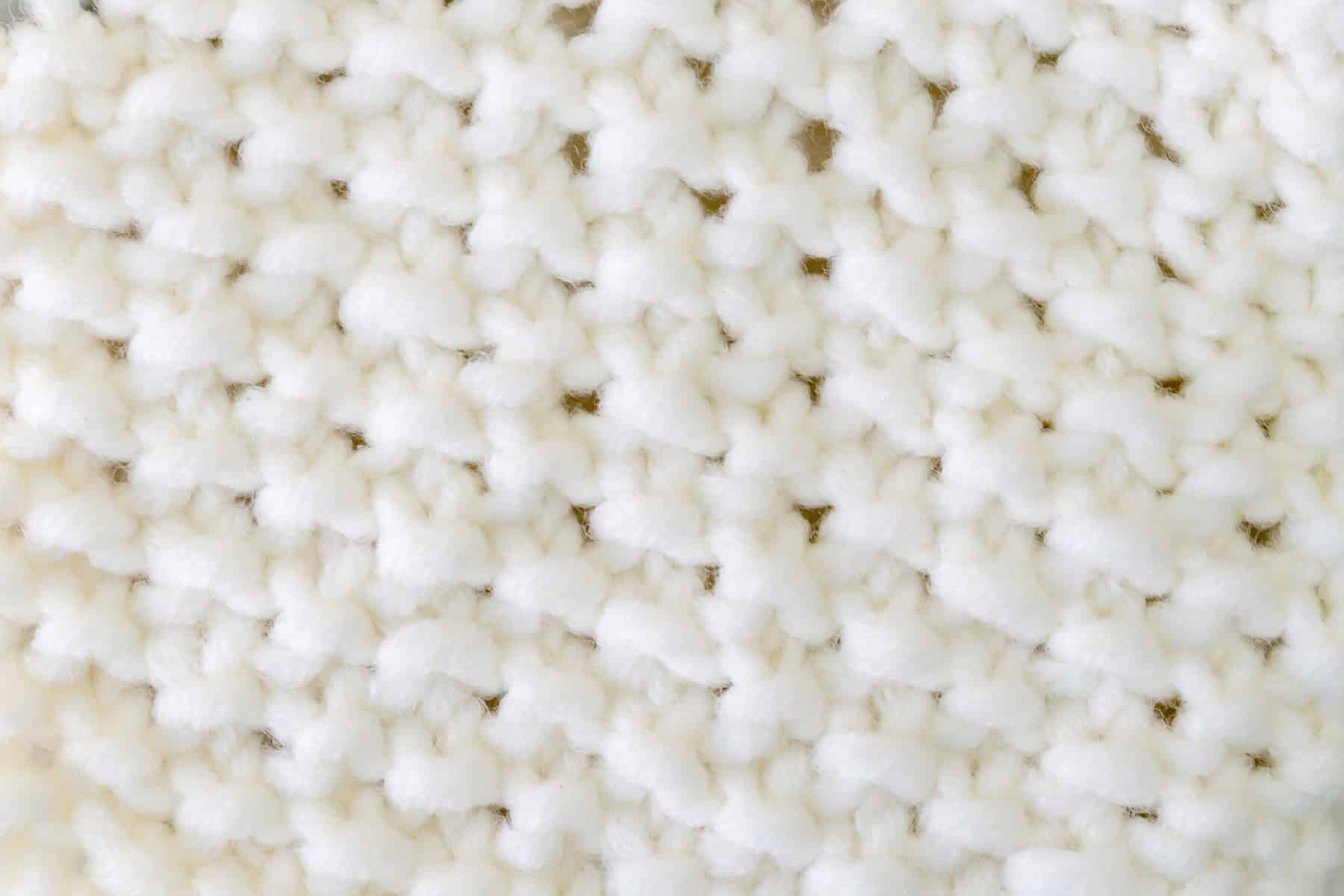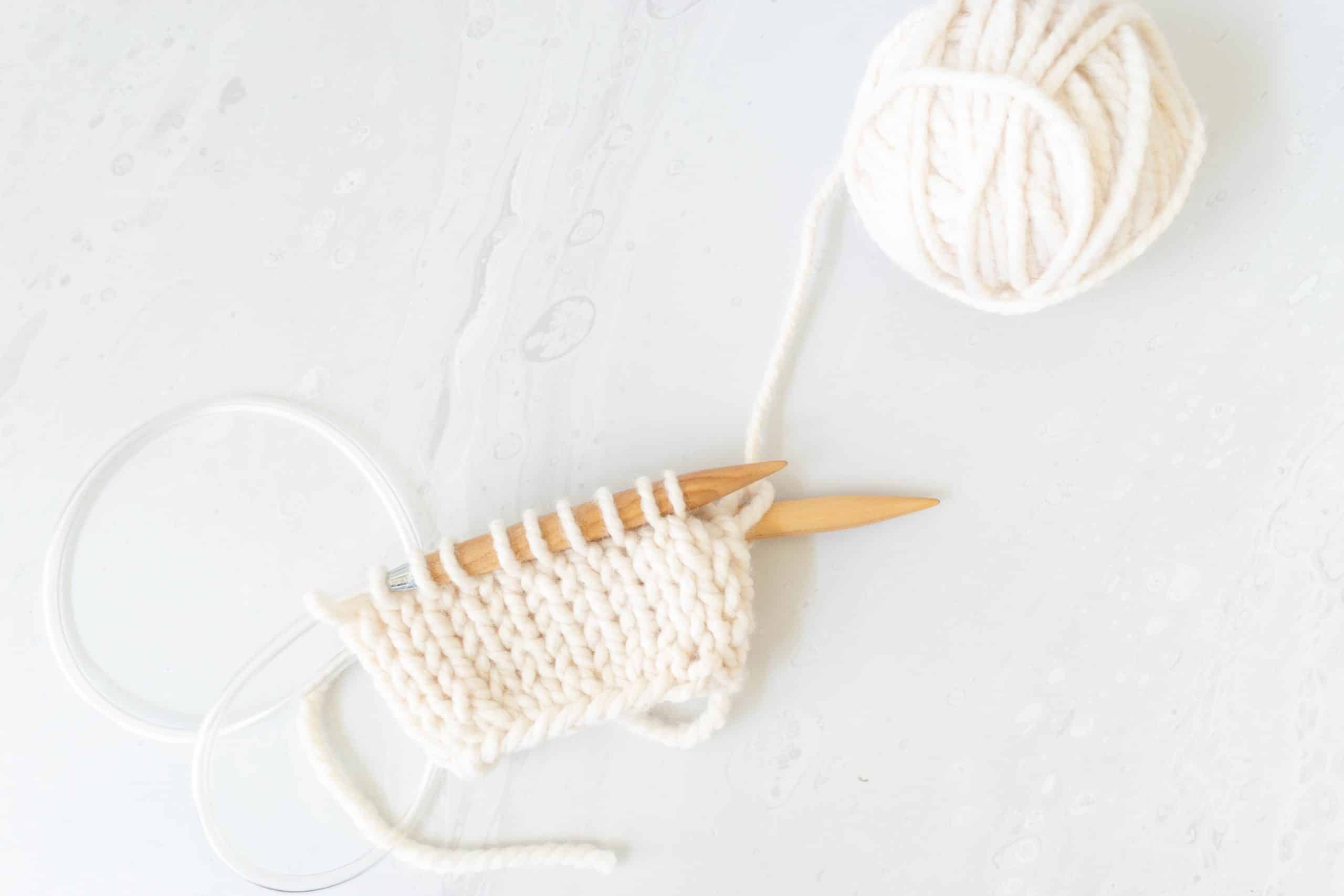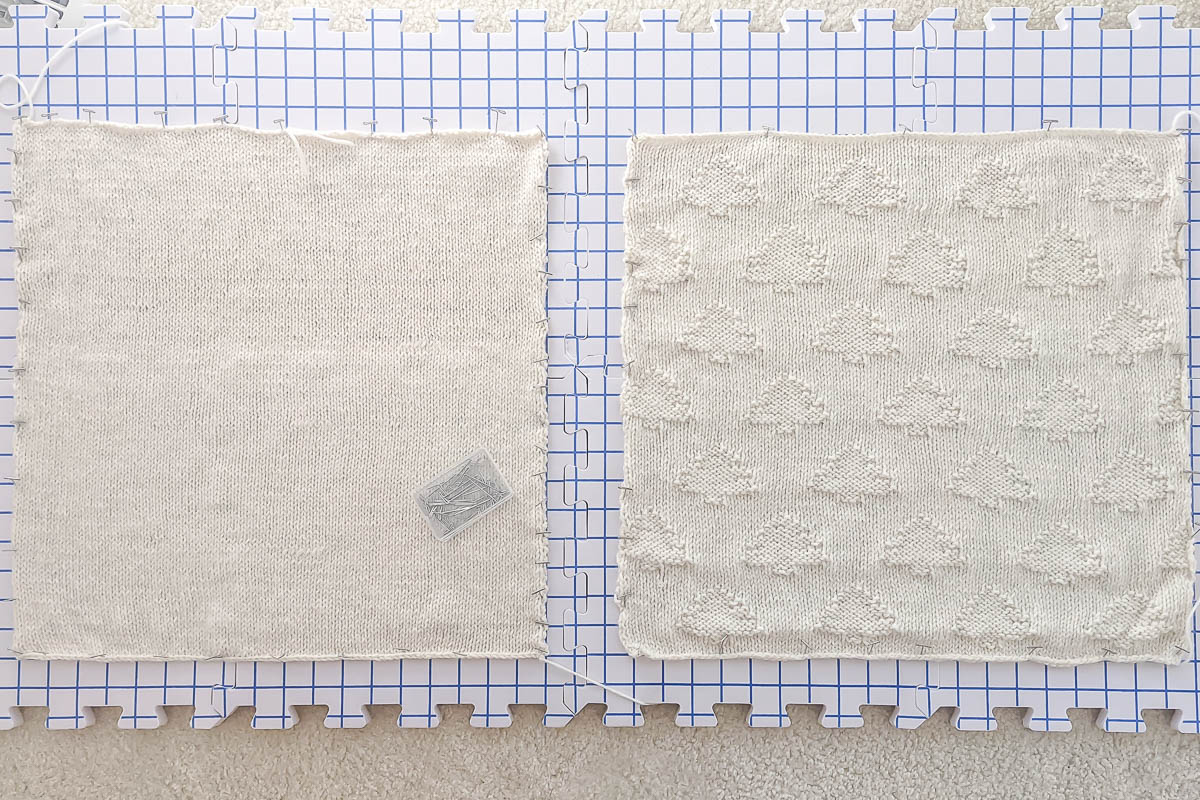Knitting Needle Sizes & Material
This post discusses everything you need to need to know about knitting needles. We discuss different knitting needle sizes and materials and what are the best knitting needles for beginners. We will discuss different types of knitting needles, such as straight, double-pointed, and circular knitting needles and when you would use those needles. Finally, we talk about knitting needle organization and share a Knitting Needle Conversion chart that you can print off for your reference. Once you finish with this post, you may find the post that discusses yarn for knitting to be helpful as well.
With any craft, there are some basic equipment needs. Unlike many crafts, the list of necessary equipment for knitting appears short…yarn and knitting needles. With that being said, the array of needles is vast!
You have straight knitting needles, circular knitting needles, and double-pointed knitting needles, each of which is useful for a specific project. And within these different types of needles, you have different sizes.
So, how do you know what type of needle to use? And what are the best knitting needles for beginners? What needle material is best? What’s the difference between US and UK knitting needle sizes? Why would I need a Knitting Needle Conversion Chart?
We are going to address all of these questions and more. And if you have a question that I didn’t answer, please ask it in the comment section below. I pinky-promise I’ll get right back to you!
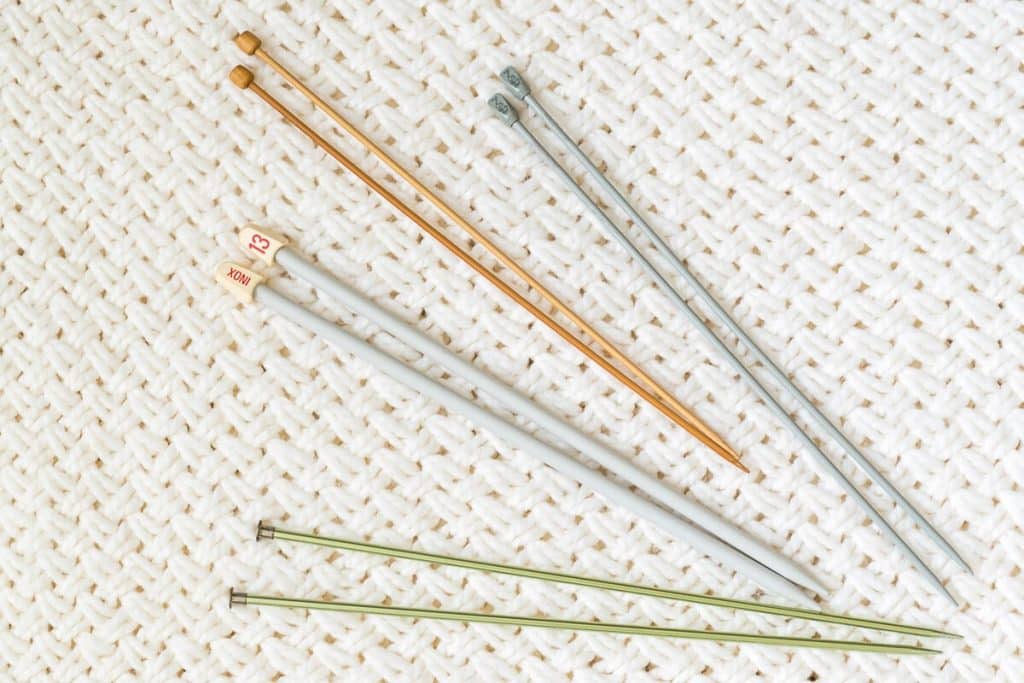
Table of Contents
Some of these links may be Amazon affiliate links and I may earn a small commission from the sale of these products to help defray the costs of operating this site, but the price you are charged is not affected. You can see my full disclosure policy here.
Different Knitting Needle Materials
I have needles made from all of these materials, except the ’boutique’ ones. And truthfully, when I am looking for a needle in my jar of needles, I rarely focus on the material. Instead, I focus on the size I need. But if I were pushed to name a favorite, it is metal with a Teflon-like coating. Susan Bates made it, but they aren’t made anymore. 🤔
One note about Needle Material, it may surprise you that different materials may result in a slight change in your stitch size! You may find that you knit tighter with a wood or bamboo needle than you do with a metal or plastic needle. If you find your gauge is slightly off using the right needle and yarn, maybe switch up to a different type of needle.
Wood & Bamboo
Wood knitting needles are typically comprised of oak, birch, or rosewood. While bamboo is technically not wood, I am classifying it with wooden needles as it has similar qualities. Wood and bamboo needles are typically not as slick as metal needles, meaning that your stitches are less likely to fall off. For this reason, they are often recommended for new knitters. And many knitters enjoy the warmth and the flexibility of wood that don’t get with a metal needle. Bamboo needles have the added benefit of being inexpensive, which is another reason they seem to be the most popular needle material.
I like Clover and Chiao Goo Bamboo Needles.
Metal
The most common metals used in knitting needles are aluminum, nickel-plated aluminum, and stainless steel. While wood needles are at one end of the spectrum of the ‘slickness’ metric, aluminum is at the other. Stitches slide easily off the aluminum and stainless steel needles, which is especially good if you are dealing with a fibrous yarn that might otherwise catch on a wood needle. Aluminum needles lack the warmth and flexibility of wood needles but will last forever. I knit with the aluminum needles passed down to me from my Grandma 30 years ago…and I have no idea how long she had them before that!
Boye has made knitting needles forever…I have quite a few that I inherited from my Grandma and that I have purchased myself.
Plastic
Plastic and acrylic needles are less slippery than metal, not as catchy as wood, and lightweight. Plastic knitting needles ar are inexpensive, so make a great purchase if you are trying the craft out and not sure how much of a commitment you want to make.
The large needles I have are typically for the larger, chunkier needles where it is useful to have lightweight needles.
Boutique
You will also find what I consider ’boutique’ needles made of glass, teak, ebony, lacquered wood, and the like.
Knitting Needle Styles
There are four different types of needles, each suited for a specific purpose.
Straight Knitting Needles
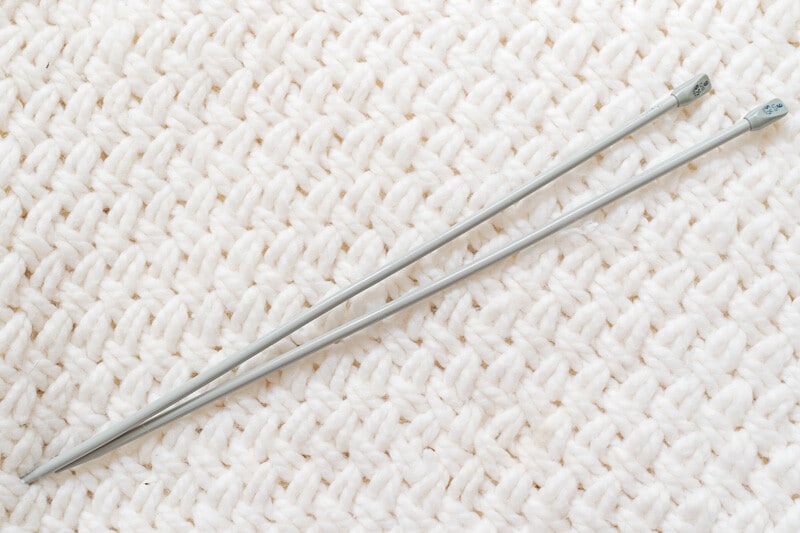
When you think ‘knitting needles’ straight needles are most likely what you think of. They are…wait for it…straight, with a tapered point on one end and a knob/bulb at the other end. The actual ‘knitting’ is done at the point, and then the stitches are slipped down the shaft of the needle. The bulb at the other end keeps the stitches on the needle.
This type of knitting needle is most handy for flat, shorter projects like scarves, washcloths, and sweater pieces which will be sewn together later. I can usually knit a baby blanket on straight needles, though I often opt to use circular needles (explained below)
Some straight needles have sharper needle tips, which are good for fine, thin yarn. Other needles have rounder points, good for bulkier yarns.
Straight needles come in various sizes, which refers to the diameter of the needle and not the length. We will discuss this in length in the Knitting Needle Sizes section.
Straight Needle Length
Straight Needles do come in various lengths, though 14″ long needles are the most common and most useful.
Circular Knitting Needles
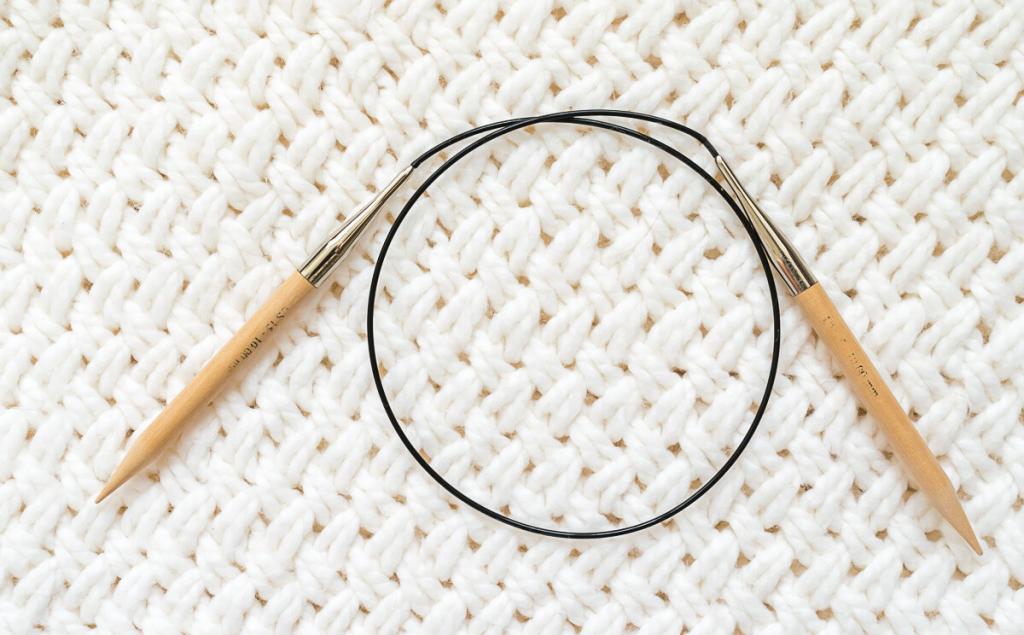
Circular Knitting Needles, often called Fixed Circular Needles, are characterized by two short straight needles connected by a flexible cord. They are useful for knitting tubes, like hats, bags, and wide stockings. Circular needles are also used for sweaters knit in the round. When used to knit tubes, you would knit around in a circle, joining both sides, always knitting on the right side of your work.
However, you can also use circular needles to knit larger, flat projects like blankets. In this case, you would stop and turn your work as you would with straight needles, moving your work from the left-hand needle to the right-hand needle until the end of the row.
Circular Needle Length
Circular Needles come in the same diameter widths that straight needles do, but there are more options for the cord length to accommodate different project sizes. Fixed Circular Needles come in different lengths, 8″ to 40″. This length is measured from the tip of the needle at one end to the tip of the needle at the other end.
Small projects like a baby hat might use a 12″ length circular needle, an adult hat would most likely require a 16″ long circular needle, and a large knitting project, like a blanket, might need a 40″ long circular needle.
ChiaoGoo, Clover, and Addi are the circular needles I use most.
Interchangeable Circular Needles
I don’t have any interchangeable knitting needles, but I can surely see the attraction. Instead of having a slew of circulars, you would have a variety of the shorter, solid needles and then a couple of the flexible cords which can be attached to the solid needles.
Double-Pointed Needles
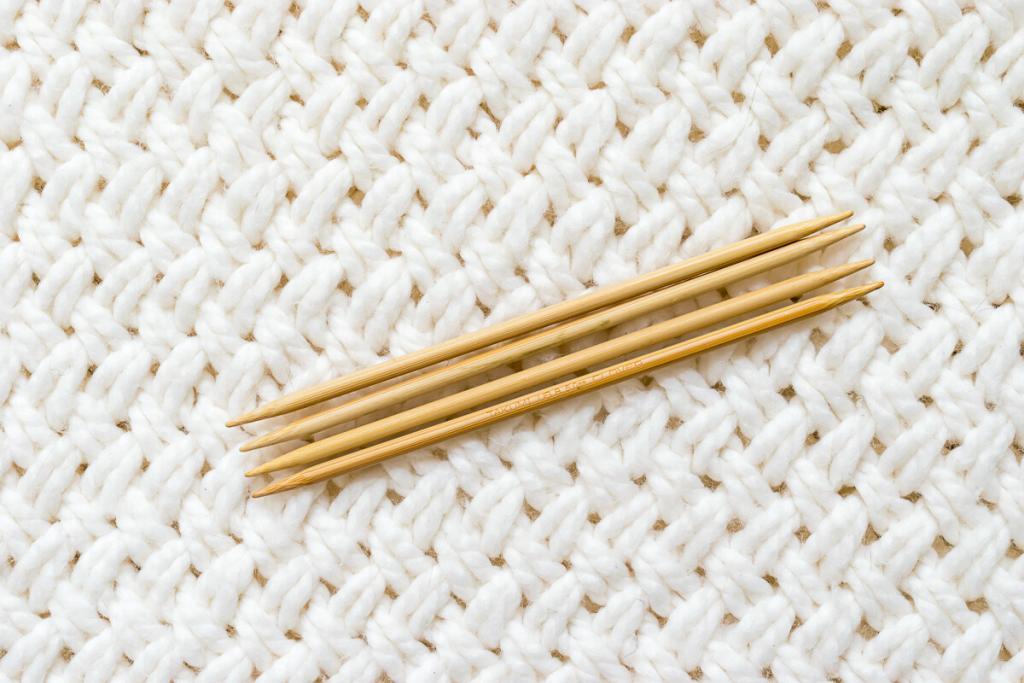
Technically still a ‘circular needle,’ double-pointed needles are also useful when knitting ‘tubes.’ The difference between double-pointed needles and circular needles is that DPKs are used for small tubes, like socks, mittens, children’s hats, i-cords, and the like. You can see a video of knitting an applied i-cord using double-pointed needles here.
Double-Pointed Needles come in sets of four-five, with points on both ends of each needle allowing you to work in the round. You divide your stitches between the 4 needles and knit until you get until the end of one needle and then move on to the next. It looks tricky but is very similar to working with fixed circular needles.
Chiao Goo, Clover, and Coopay all make sets of Double-Pointed Needles.
Double-Pointed Needle Length
DPKs come in the same diameter widths that straight needles do and lengths of 4 inches (for knitting gloves and mittens), 5 or 6 inches (for knitting socks), and 8 inches (for knitting hats, sweaters, and larger items).
Cable Needles
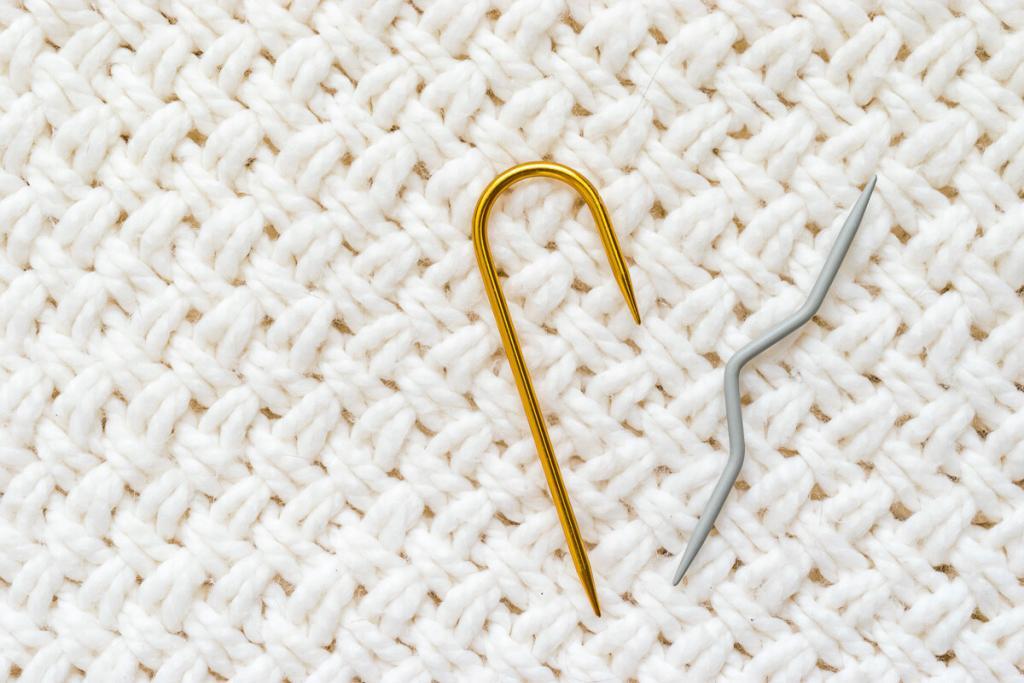
I know this will come as a surprise, but cable needles are used to knit cables in your knit project! Making cables involves moving a stitch or several stitches to the right or left and in front or behind other stitches. Cable Needles hold the stitches and move them, and then those ‘held’ stitches are knit from the cable needle.
Cable needles come in 2 basic configurations, and which one you choose is up to you. I’ve always preferred the hook shape, shown in the gold one above.
It is not necessary to match the size of your cable needle with the other needles you are using in your project; they typically come in a large or small size instead of the number size that straight, circular, and double-pointed needles have.
Knitting Needle Sizes
Every pattern you choose will instruct you on what size needle to use based on the recommended yarn and the pattern specifics. All else being equal, you should be able to replicate the pattern author’s finished work with the recommended yarn, recommended needles, and pattern.
Depending on the project, you may have two measurements for a needle
As we mentioned above, the length of most straights knitting needles is around 14″, from tip to knob/bulb and is typically not referred to on a pattern. However, if you are using a circular needle, the recommended length is typically given, along with the diameter measurement.
But, most often, the measurement we are talking about is the diameter of the needle. Circular Knitting Needles, Straight Knitting Needles and Double-Pointed Knitting Needles all use the same measurement and will reflect US size, Metric size, and sometimes the UK Size.
The Size of the Needles is Dictated by the Weight of the Yarn Used
Most yarn labels will also indicate a recommended knitting needle as well as crochet hook size. The size of the needle will dictate the size of your finished work. As you would imagine, the needle size is dictated by the yarn used. A project using fine sock yarns would recommend a small needle size, while a big, chunky yarn would recommend a much larger needle. The label will also show the swatch size you can expect using the yarn, recommended needle, and the number of cast-on stitches; this is called the gauge.
In the label shown below, using this yarn and size US6 needles, you can expect a 4″ by 4″ swatch if you cast on 22 stitches and knit 30 rows. Typically your swatch will be knit in stockinette. See the box below for a more in-depth discussion of gauge swatches.
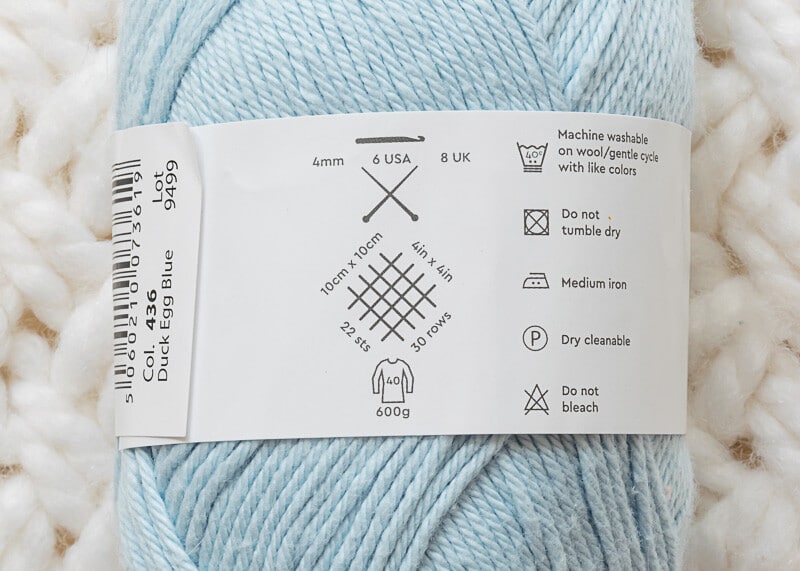
US, Metric, and UK Sizes
Just because we need to be challenged, knitting needles are measured differently in different countries…like shoes! Most patterns and yarn labels will specify the needle measurement in US and metric measurements, and sometimes in UK measurement.
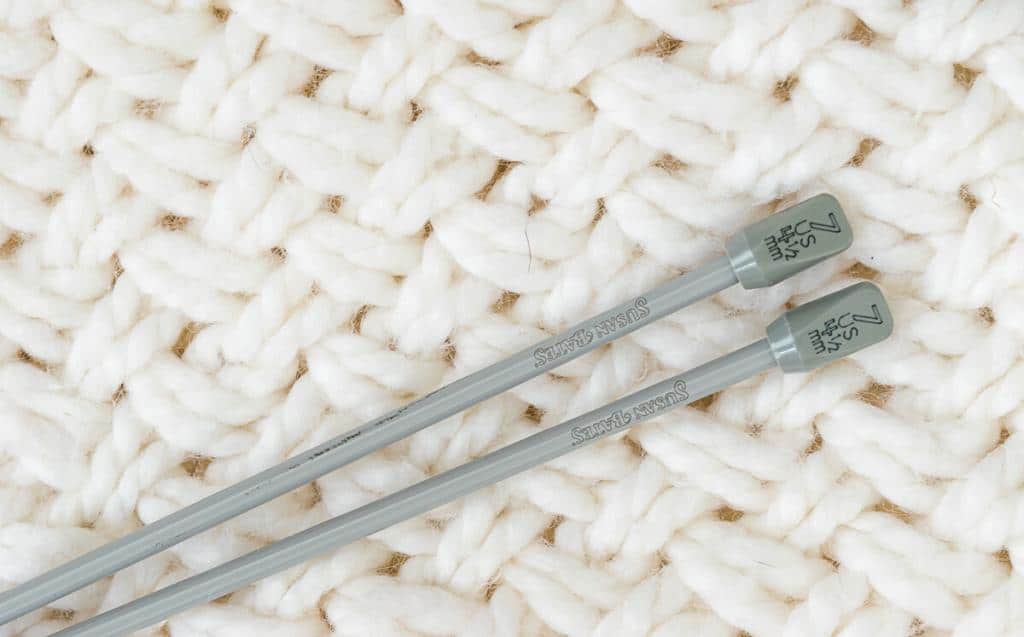
Sometimes the needle will show both sizes as well, especially with newer needles. If your needle doesn’t have both measurements, a Knitting Needle Conversion Chart will come in handy.
Knitting Needle Size Conversion Chart
This Knitting Needle Conversion Chart shows the equivalents between US, UK, and metric knitting needles. Additionally, the equivalent crochet hook measurement is included.
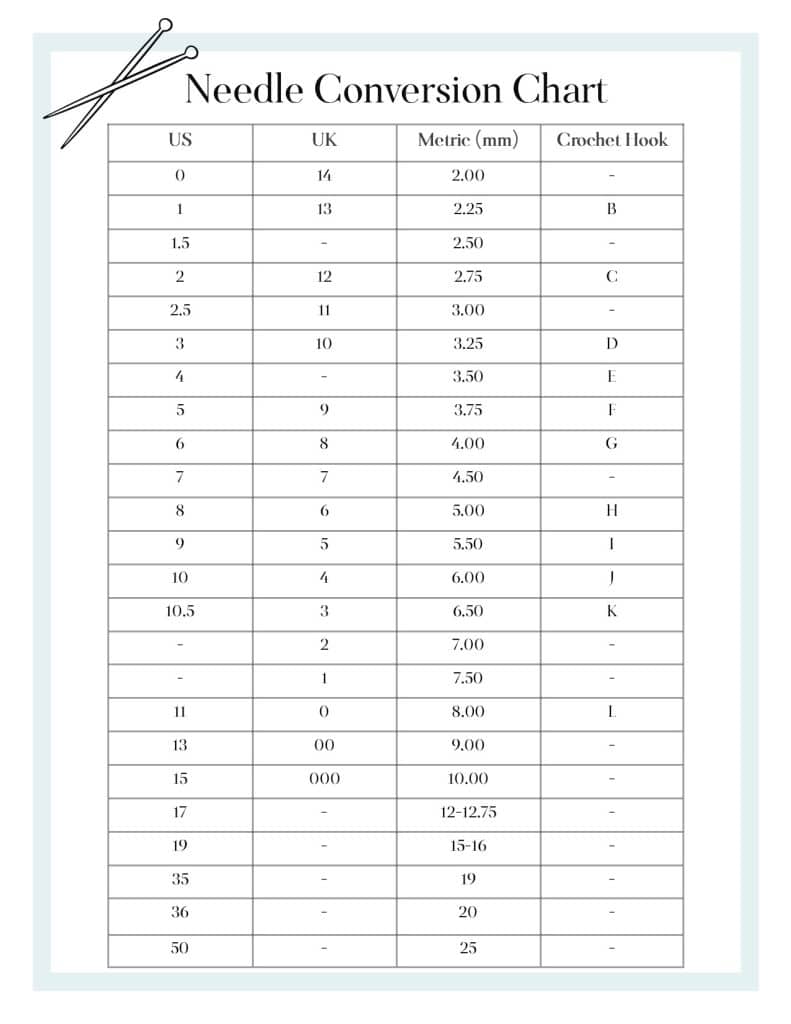
This Knitting Needle Conversion Chart is available for all subscribers in the Benefits Library. Or, click the button below to have the chart automagically sent to your email.
Knitting Needle Gauge
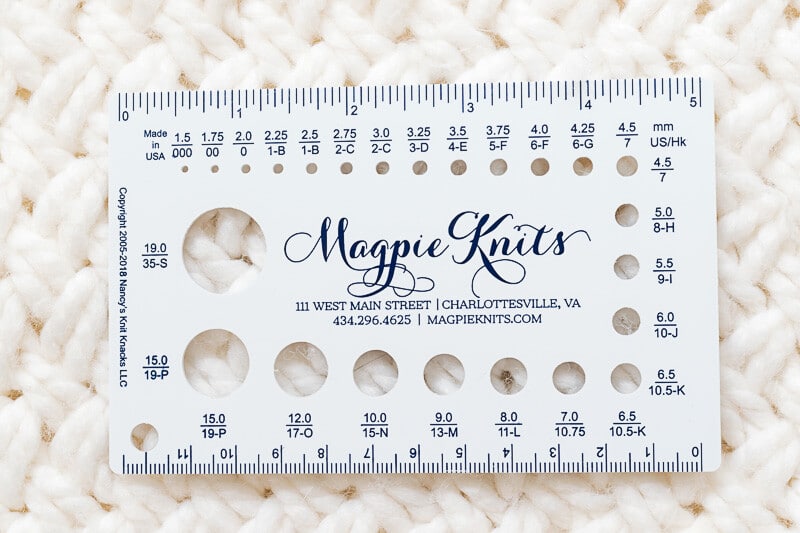
One of the handy tools you will want is a knitting needle gauge. Sometimes the printing showing the needle size will rub off or, which seems to be the case often for DPKs; the size isn’t printed on the needle at all. All you have to do is insert your needle into the holes on the needle gauge, and when you find the one that it ‘just’ fits into, that would be the size of your needle.
Typically, a needle gauge will have a ruler to help you determine the knit gauge (I know, many gauges are going on here!)
What is a Knit Gauge?
You will see knitting gauge referenced on both patterns and skeins of yarn and you may see it also referred to as a swatch.
The pattern designer includes the gauge that the pattern reflects so that you can achieve its intended fit and drape. The gauge is also useful if you want to use different yarns while still creating the same basic finished item. We all knit differently. Some of us tend to knit tight stitches, while others knit loosely. Your stitch tension might be different from that of the pattern designer. Getting a gauge will help you achieve the designer’s result without having to match their tension.
As we mentioned, gauge has two parts: stitches and rows. This means the gauge is measuring both the width of your stitches and the height of your stitches.
To knit a gauge swatch, cast on twice the number of stitches that the gauge calls for, using the needles recommended by the pattern. For example, if the gauge is 6 stitches and 7 rows in a 4″ X 4″ swatch, cast on 12 stitches and work for 8 rows plus a few more. Then place a ruler against your work and count the number of stitches and rows that you knit over 4″.
In the illustration below, I knit almost 7 stitches and 7.5 rows over 4″. So I am getting more stitches and more rows than the gauge standard. In this case, if I wanted to get the exact gauge, I should use bigger needles or try a metal needle as I knit this swatch using wood needles. Bigger needles result in bigger stitches, so there will be fewer of them per inch.
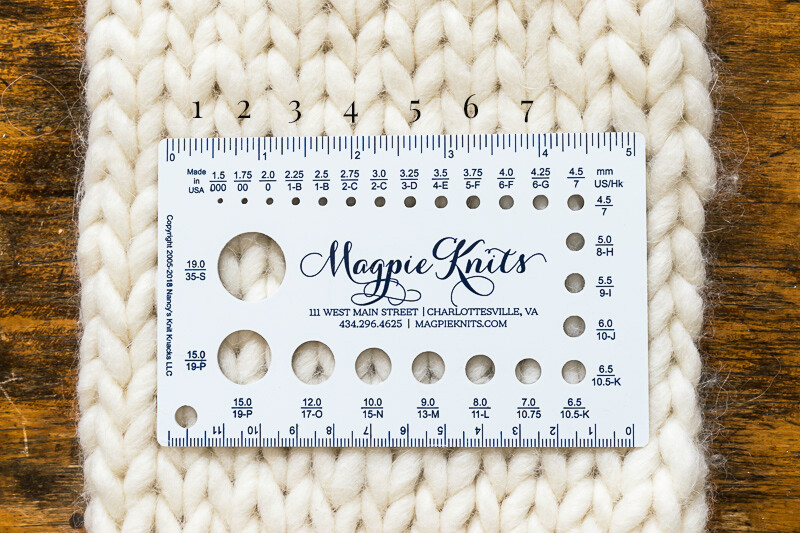
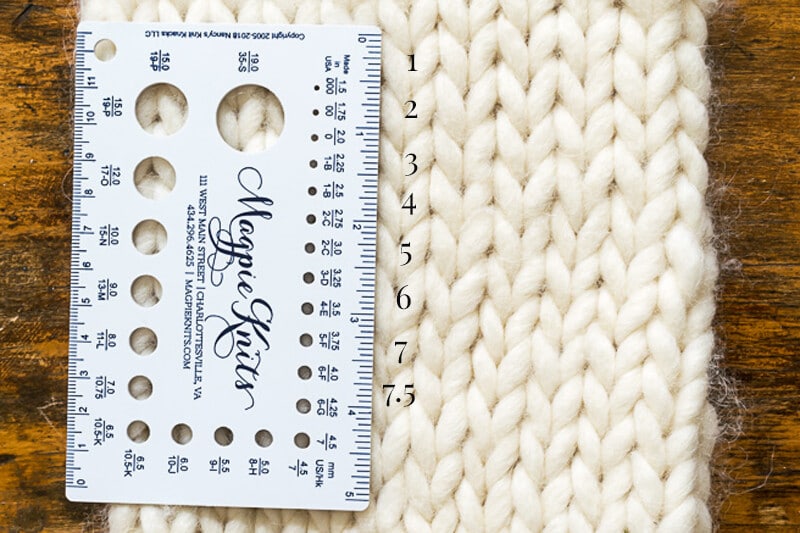
And if I had too few stitches relative to the gauge, I should use a smaller needle or reconsider the needle material.
How to Chose the Best Knitting Needle for Project
Once you try a variety of needle materials, you will figure out which material you like to knit with best. If you are a beginner knitter, see if you can borrow some from a friend before you start buying some needles that you will not use.
In terms of needle size and style, your chosen project and yarn will dictate both of those.
What are the Best Needles for Beginner Knitters?
We’ve talked size, material, and style of knitting needles. With all these options, what are the Best Knitting Needles for Beginners? In terms of material, wood or bamboo is recommended for new knitters as stitches are less likely to slip off. The recommended needle size for a beginner knitters would be an 8, 9, or 10; the US10 is about the same diameter as a pencil. And finally, in terms of style, I would recommend simple Straight Knitting Needles for Beginners
Knitting Needle Organization
Last, but not least, let’s chat about Knitting Needle Organization.
I am pretty simple with my Straight and Double-Point Needle Organization, I just keep them in cups and tall vases.
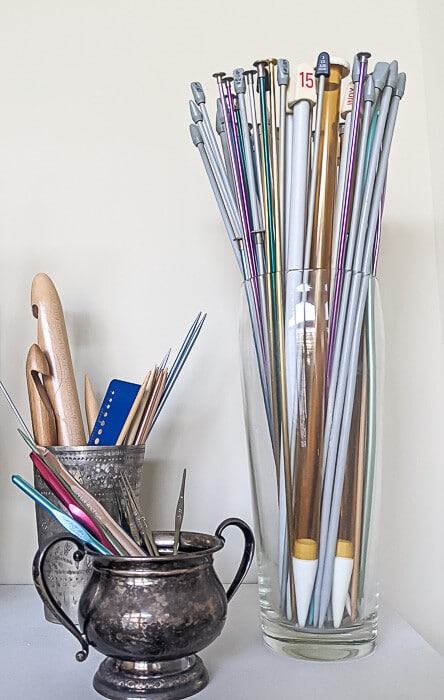
I know many of you prefer knitting needle cases. And to you, I say, ‘Well, aren’t you the over-achieving organizer!” 😉 I tried one of those cases but found that plopping them in my jar was much more likely to happen than pulling out a case and slipping them in.
But, I was stymied when it came to my Circular Needles! Those little numbers were just a hot mess in my ‘knit drawer’. I recently figured out a Circular Needle Storage and Organization system that worked for me. You can pop on over that post here.
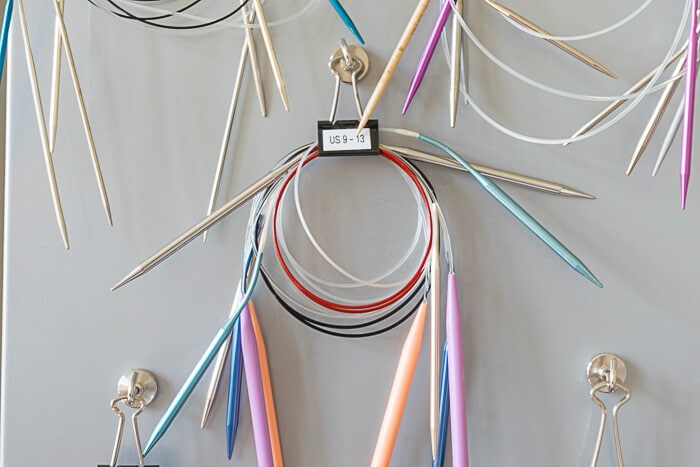
Wow! That was a whole lot of Knitting Needle Knowledge we just dropped. Did I forget anything? Do you still have questions?
If you want to learn how to knit or are looking to brush up on your knitting skills and knowledge, pop over to the How to Knit page, which houses all of the posts that teach knitting skills. Or, you could go ahead and visit each one by clicking the links below.
All About Knitting
- All About Yarn, including different fibers and weights, how to read a yarn label, and a Yarn Weights Chart
- All About Knitting Needles, including material, sizes, styles, and a Needle Conversion Chart.
- How to Cast On Using the Long-Tail Method, including calculating how much yarn is needed to cast on and how to make a slip knot.
- How to Knit the Knit Stitch
- How to Knit the Purl Stitch
- How to Knit the Seed Stitch
- How to Bind Off, including how to weave in your loose ends.
- How to Read a Knit Pattern, including a Common Knitting Abbreviations Chart.
- This simple Garter Knit Dishcloth will let you put all your new skills to good use!
- How to Block Your Knitting.
- Common Knit Errors; How to Prevent or Diagnose and Fix Them
- Join yarn using the Russian Join
- How to seam pieces of knit fabric with the Mattress Stitch (for sweaters, tops, pillows, etc…)
- How to Knit in the Round with Circular Needles
- How to Knit in the Round with Double-Pointed Needles
- How to Knit in the Round using the Magic Loop Technique.
- Organize Your Knitting with these free printables.
- Check out our Gift Ideas for Knitters.
Bookmark this page or pin the following image to refer back to this post all about knitting needles and to access the Knitting Needle Conversion Chart in the future.
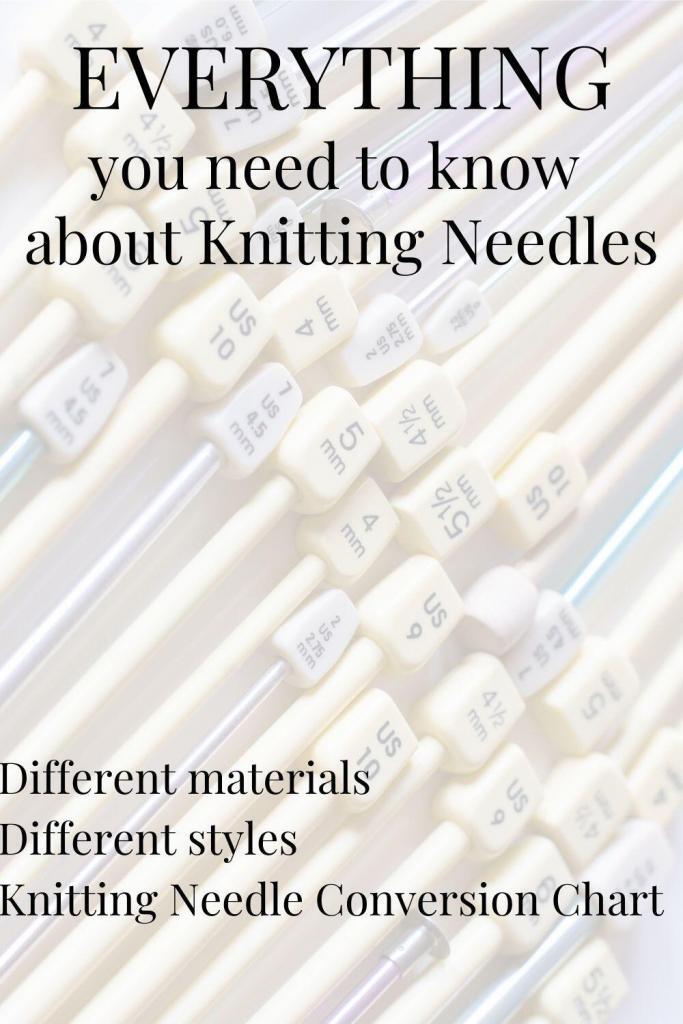
Thanks so much for spending a few minutes of your busy day with me!
To ensure you don’t miss future content, pop your email in the pale green box on the right or click here. I usually send one email weekly, so I won’t inundate your inbox. I’m sensitive to an overflowing email inbox!
We will only use your email address to send you emails, no more than 1-2 weekly. In addition, you will have access to my growing library of knit & crochet patterns and other printables. Check back often as this library will continue to grow. You can unsubscribe anytime by emailing me or clicking on the “unsubscribe” link at the bottom of all emails.
And you can access many of the products I refer to on my Nourish and Nestle Amazon Page. You can access it here.
So, if you’d like to participate in the ‘subscriber benefit’ action, simply subscribe to Nourish and Nestle here or use the form on the right sidebar. It’s slightly towards the top.
I have sent all my subscribers the link to the Subscriber Benefits Library. If you missed it or misplaced it, let me know.
Until next time…


